Words can be related in more ways that one. 19th-century language historians discovered so-called sound correspondences. For example, French has trois, while English has three, and a “law” regulates the t ~ th alternation between French and English. This law works so well that if words in both French and English begin with t, they cannot be true cognates. And indeed, Engl. touch and French toucher are not siblings: the English verb is a borrowing of the French one, not its congener. Similar correspondences have been found between vowels. But language is not arithmetic, and words are not soldiers on the march. Time and again we seem to be dealing with related words despite the fact that they violate sound correspondences. Engl. cob, in any of its numerous meanings, looks as though it is connected with cub; yet no “law” covers the alternation of o and u in Modern English. Hundreds of words look like members of a club rather than of a family (club members recognize one another and dine together but have different parents) or the children living in the same orphanage (identical clothes and similar habits, but the union is artificial), or even mushrooms growing on a stump (no common root despite the unmistakable ties). Scholars feel insecure when faced with this situation: once they step outside the green zone of regular sound correspondences, the door opens to arbitrary etymologizing. They suddenly find themselves in the 18th century (at the latest), when no control for comparing look-alikes existed. At that time, god was derived from good and rabbit from rub or rough-foot, and such derivations aroused no protest. As we will see, the origin of snob is not particularly complicated, provided we agree to remain in a word orphanage rather than in a family.
Even an approximate age of the noun snob is beyond reconstruction, for no citation of it predates 1776. Judging by the records, it originated in the north of England, which neither means that it is a loan from Scandinavian into Middle English nor makes such a conjecture improbable. Some Scandinavian words that had been current in the north since the Vikings’ raids reached the Standard unexpectedly late. One of them is slang, whose history, contrary to the history of snob, has been traced in detail. The attested meanings of snob are as following (the dates in parentheses refer to their first known appearance in print); “shoemaker; cobbler’s apprentice” (1781); “a townsman, anyone not a gownsman (that is, a student) in Cambridge” (1796); “a person belonging to the ordinary or lower classes of society; one having no pretensions to rank or gentility; one who has little or no breeding or good taste, a vulgar or ostentatious person” (1838, 1859); “one whose ideas and conduct are prompted by a vulgar admiration for wealth or social position” (1846-1848). Snob “cobbler” is still a living word in some dialects, but most English-speakers remember only the last-mentioned meaning.
The word snob and its derivatives (snobbery, snobbish, snobbishness; rarely snobbism) owe their popularity to Thackeray, who first published his essays on various snobs in Punch and later collected them in a book. His snobs are not always vulgar and ostentatious people: some are insufficiently refined, and their manners are ridiculed only because of the pressure of society, which slights those whose manners violate certain rules. A reader of older English literature may wonder what is meant when snob turns up in the text. Long ago, an annual called The Keepsake (the predecessor of Christmas books) was published in the United States. In the annual for 1831, the following verse appeared: “Sir Samuel Snob—that was his name—/ Three times to Mrs. Brown/ Had ventured just to hint his flame,/ And twice received—a frown.” We applaud Sir Samuel’s perseverance but would like to know why his surname was Snob. Most definitely, he was not a cobbler. I suspect that he lacked breeding, for otherwise he would not have accosted a married woman in such an ungentlemanly way.
Some tie connects snob and nob. The latter has a doublet knob, and the two are often impossible to distinguish. Among other things, nob/knob means “head.” Cobblers (“snobs”) deal with people’s feet, not their heads, but nobs did not make hats or bonnets. Snobs and nobs are said to have arisen among the internal factions of shoemakers. (Here and below, I am using shoemaker and cobbler as interchangeable synonyms, but originally the cobblers claimed control over the soles of boots and shoes, and shoemakers over the upper leathers.) Allusions to “two great sections of mankind, nobs and snobs” turn up occasionally in 19th-century fiction and the popular press. According to an 1831 newspaper statement (again 1831!), “the nobs have lost their dirty seats—the honest snobs have got ‘em.” A hundred years ago, in British provincial English a strikebreaker, or scab, as such an individual is known in the United States, was called knobstick, blacknob, knob, and nob. Here “nobs” are again represented as dishonest. Although in regional speech the sound s- is often added to all kinds of words (hence the secondary bond between slang and language, for example), nothing suggests that the etymon (source) of snob is nob, with s- prefixed to it. Both snob and cobbler contain the group -ob-, but this coincidence is probably of no importance either.
It does not follow that “cobbler” is the original meaning of snob because it is the earliest one in our texts. More likely, the starting point was “a vulgar person,” with “cobbler” chosen as the epitome of vulgarity. Students at Cambridge must have had that connotation in mind when they, the gownsmen, showed their contempt to the townsmen. At Eaton and Oxford, townsmen were called cads. Cad is a shortening of cad(d)ee, that is, of caddie “cadet” (cadet is a French word), and it meant “an unbooked passenger on a coach; assistant to a coachman; omnibus conductor; confederate,” in dialects also “the youngest of a litter; an odd-job man” before it acquired the meaning “townsman” and “an ill-bred person.” Cobblers and their apprentices are no more “vulgar” than conductors and their assistants.
The question is why snob, whatever its age and provenance, came to designate a person deficient in breeding and how it was coined. In the Germanic languages, the consonantal group sn- is sound symbolic, and in this respect it shares common ground with gl- (which often turns up in words for “glitter” and “glow”) and sl- (which is frequent in words for “slime” and things slovenly and sleazy). Initial sn- occurs in numerous words designating cutting (compare snip, snap, and snub) and sharp objects, including “nose” (compare snout) and its functions (compare sneeze, snooze, snort, sniff, and snuff). Among the Scandinavian words resembling snob, especially prominent are a few meaning “fool, dolt, idiot,” but they have the structure sn-p. The connection between cutting/snapping/ sniffing and stupidity is not immediately obvious, but one can be called a fool for so many reasons that guessing would be unprofitable. People may have called the sn-p man a fool because he was of stunted growth (“snubbed” by nature) or had an ugly “snout.” A snotty person produces too much mucus in his nose, but snotty is also “arrogant, supercilious.” Perhaps snotty “arrogant” is a variant of snooty “snouty,” unrelated directly to snot; however, one cannot be certain. Old Icelandic snotr “clever, wise” has cognates in other Germanic languages and continued into Modern Icelandic (snotur). The etymology of snotr remains a matter of debate. In any case, a person who has a sensitive nose smells things others miss and becomes clever in the process. In historical semantics, as in life, the distance between “wise” and “stupid” is short.
Welcome to the sn-club. Snob belongs to it, but its origin is partly obscure. When it emerged, it seems to have designated a person whose social status was low. Although, apparently, a northern word, snob does not sound exactly like any Scandinavian noun or verb and could be coined on English soil. It correlates with nob but was not derived from it, and its association with cobblers is more or less fortuitous. Snob may be a cognate of snub, but their kinship does not explain how it was coined. According to a legend, whose earliest version was offered in 1850, snob is an abbreviation of either s(ine) nob(ilitate) or s(ub) nob(ilitate). Allegedly, those words were written in the matriculation documents at either Cambridge or Oxford, or Eaton if a graduate was not an aristocrat. This legend, as Skeat, himself a long-time professor at Cambridge, put it, is a poor joke.
 Anatoly Liberman is the author of Word Origins…And How We Know Them as well as An Analytic Dictionary of English Etymology: An Introduction. His column on word origins, The Oxford Etymologist, appears here each Wednesday. Send your etymology question to [email protected]; he’ll do his best to avoid responding with “origin unknown.”
Anatoly Liberman is the author of Word Origins…And How We Know Them as well as An Analytic Dictionary of English Etymology: An Introduction. His column on word origins, The Oxford Etymologist, appears here each Wednesday. Send your etymology question to [email protected]; he’ll do his best to avoid responding with “origin unknown.”




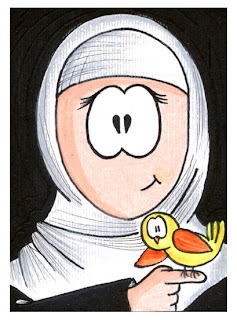
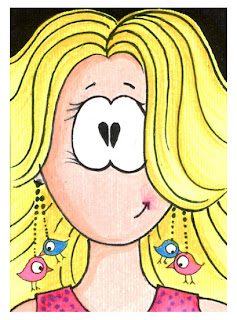
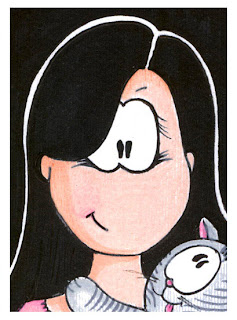
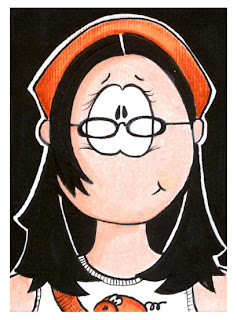
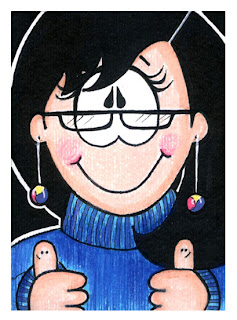
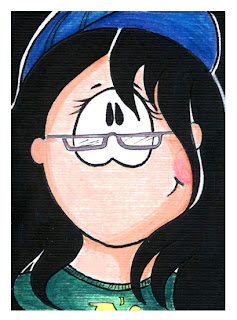
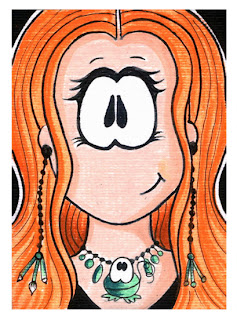

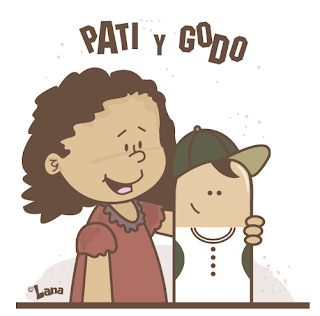
awwww im sooo cute!! I want earings like that!! THANK YOU ZARI!!! :D
¡No puedo con tanta ternura! Arghhh!!! They are exactly the same, you've capture their essence, Zari. I want a pair on earings like Bearuh's too XD
que bella!!! :D y cerdito de barro está también jejejej
I'm so glad you like your portrait guys!it has been my pleasure to zappy-fy such amazing artists!
i would love a pair of those earings too ;)
el cerdito no podia faltar...es que me mato ese post! ;)
excellent ATCs..I like the details in each picture!
I love mine!! My Ocean looks soo cute!! And I really love my zappyfied version! :D Thank you so much Zari!!